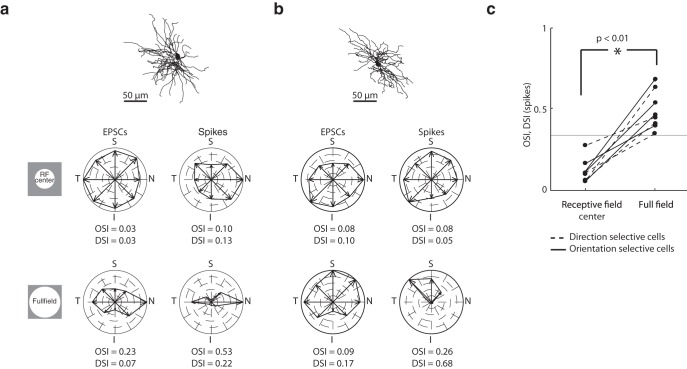Figure 9.
Dependence of orientation and direction selectivity on stimulus size. a, Anatomical reconstruction of an orientation-selective On-Off relay cell shown above polar plots constructed from EPSCs (left) and spikes (right) evoked by sinusoidal gratings of different orientations/directions of motion drifting at 4 Hz; axes of the polar plots are labeled S (superior), I (inferior), T (temporal), and N (nasal). Responses evoked by a grating patch confined to the receptive field were not orientation-selective, whereas those evoked by full-field gratings were tuned. b, Same as in a, but illustrating the dependence of tuning on stimulus size for a direction-selective cell. c, Before-and-after plots of OSI and DSI computed for spikes as a function of stimulus size. Solid lines indicate orientation-selective cells. Dotted lines indicate direction-selective cells. Gray line indicates DSI or OSI of 0.33. Significance was assessed with a two-sample t test.

